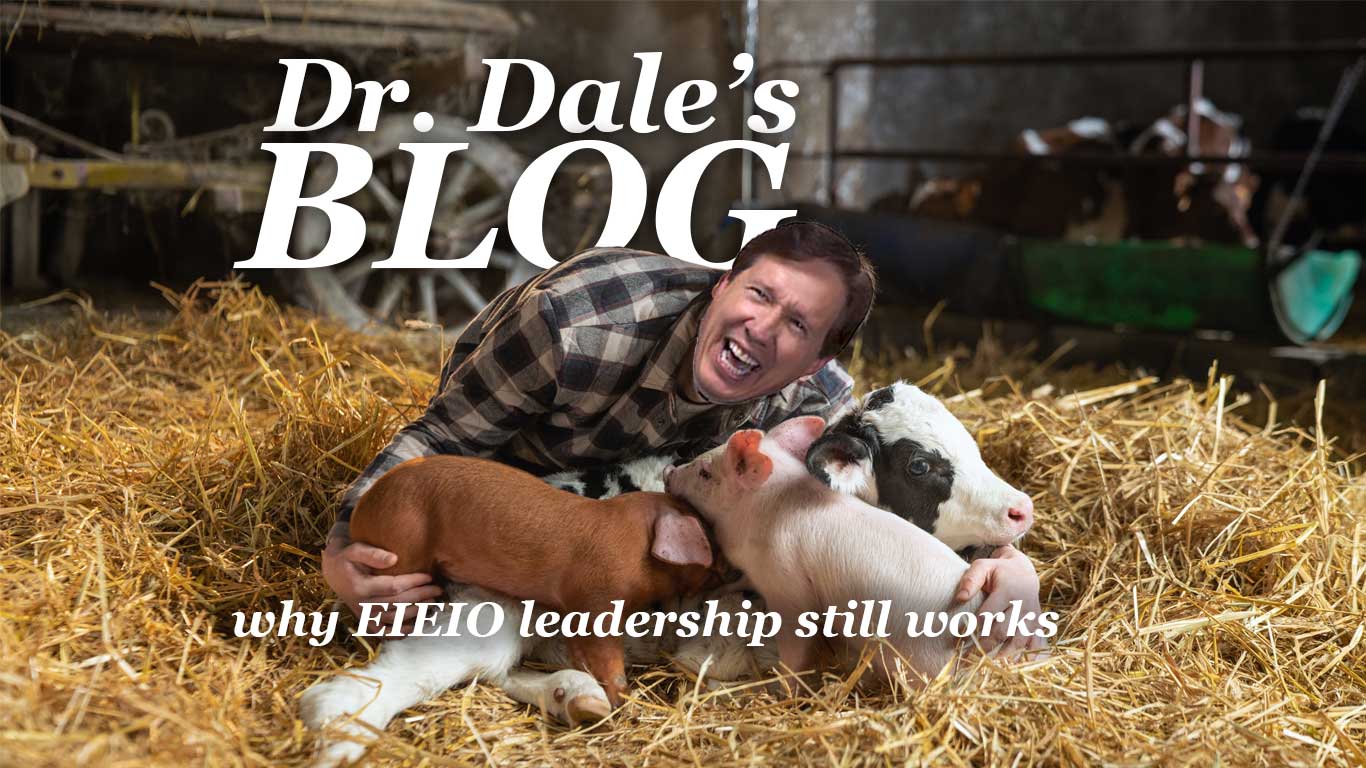leadership, professional development, teamwork
The Old MacDonald Project: Why EIEIO Leadership Still Works
Any of you who read my blogs from time to time know two things about me: I am old school and I started from meager beginnings. When I was growing up on our family farm, I needed a 4-H project. My Grandfather suggested pigs. We had the space for pigs and he bought some. So, I started to learn about pig management. One of his common themes was,
“You got to get in there! You can’t be a bystander and learn anything.”
So, I fed them, protected them, and managed them. I was rewarded by what my Grandfather called the Oink Rule: happy pigs are productive pigs. That’s where the Old MacDonald Project was born!
There is an old saying that a good shepherd smells like his sheep. At its basic level, this analogy relates to how the shepherd will lead the sheep. They don’t drive the sheep to green pastures; they lead them there. The sheep follow the shepherd because they trust the shepherd. The shepherd makes sure that the sheep are well taken care of, moving them to new resources as the need arises. Simply put, you get a happy and productive team. In the same way, a good leader understands good common-sense practices of input and output! If garbage in = garbage out (GIGO); then conversely, energy in + enthusiasm in = output (or EIEIO). Here are five EIEIO principles:
- Leaders model the traits and behaviors they expect from others. They treat everyone with respect, manage conflict, and are good listeners. They set clear expectations, not only on how the work gets done, but also how people interact with each other. For example, do you expect your employees to be on time, but you are always late?
- Leaders share the vision of where the farm is going. Leaders passionately believe in their vision and inspire others to join. They create a vision and chart a clear path on how to achieve it. Employees will become more engaged if they can see the goal and how they contribute. Other than growing a crop, do your employees know your long-term vision and the role they play in it?
- Leaders challenge the status quo, are not stuck in the past, and are always looking for better ways to do things. They challenge themselves and aren’t afraid when others dispute or test their ideas. Leaders often encourage employees at the bottom to bring their ideas forward for consideration. Do you shoot employees down when they come up with a new way of doing things because “that’s just not the way we do it around here”? Do you encourage employees to come up with ideas on how to improve the farm?
- Leaders don’t command and control every last detail. If a farm is going to grow, there isn’t enough time in a day to manage everything. Instead, they coach, mentor, and ultimately create self-managing collaborative teams. They set high standards and goals, and then allow employees to work independently. They believe in hiring employees who don’t require constant supervision. Do your employees come to you with so many questions you can’t focus on the larger strategic plan? There are only so many minutes in each day. Use them wisely on the most important things.
- Leaders have a heart, and it shows with how they encourage and motivate everyone around them. Leaders are quick to give a compliment and recognize that farming is often hard work. They celebrate successes and accomplishments of the farm and those who contribute. Do you give feedback to each employee at least once a week?




